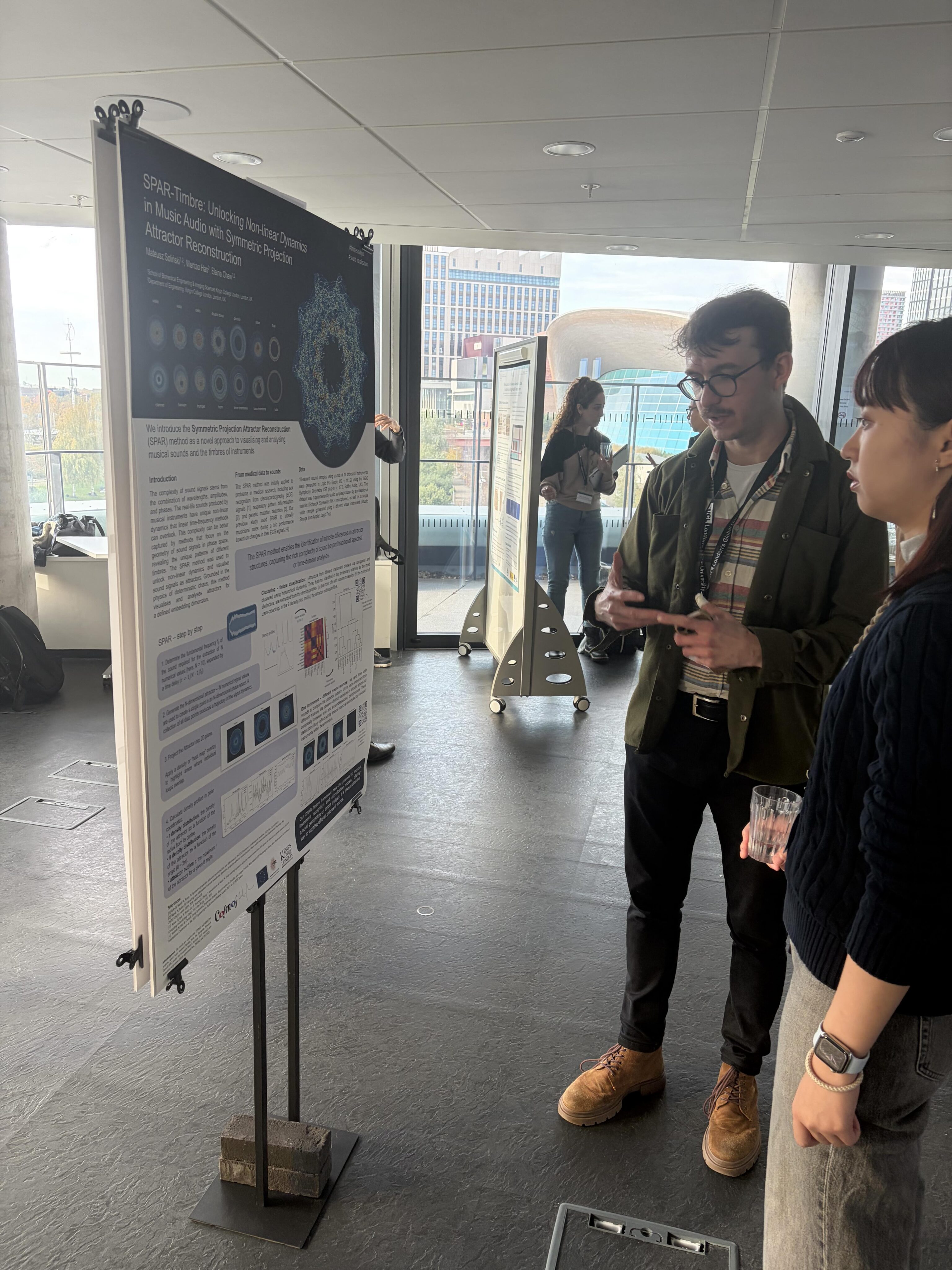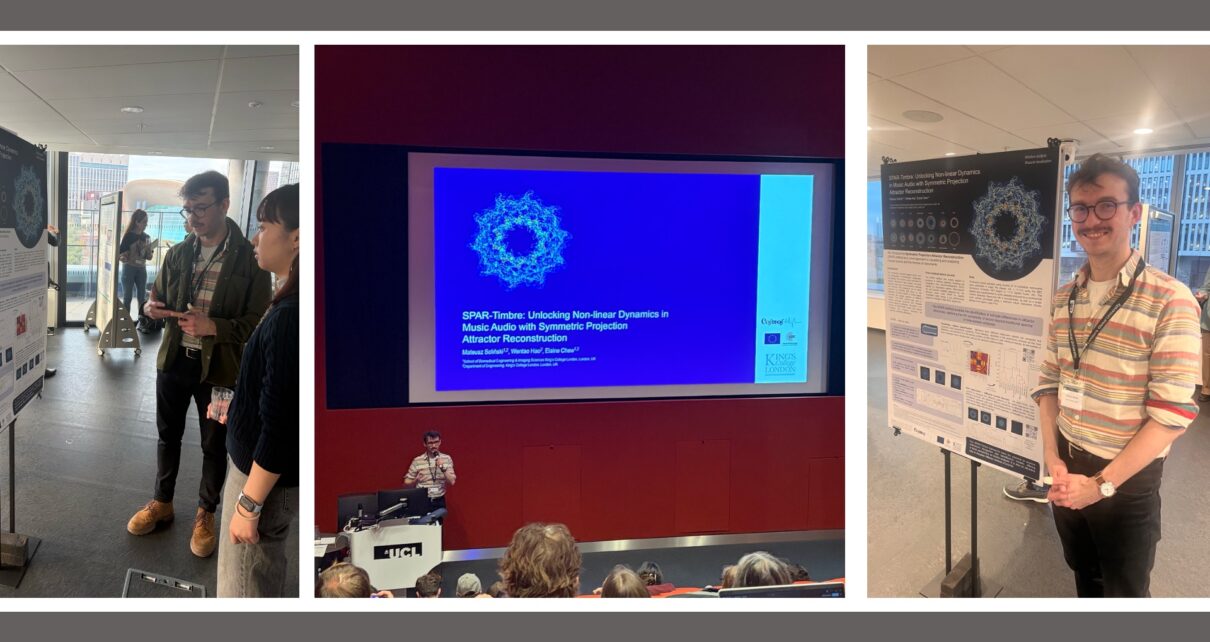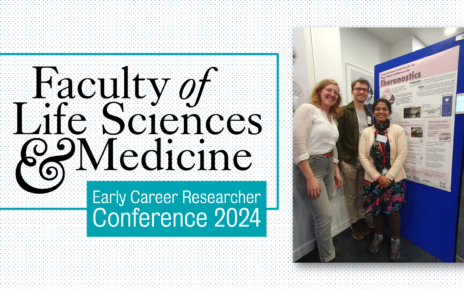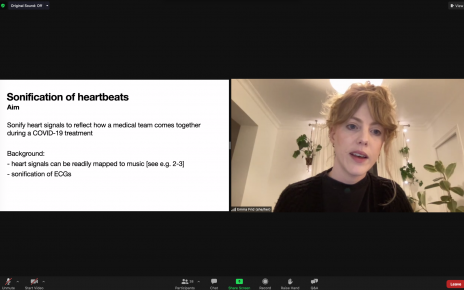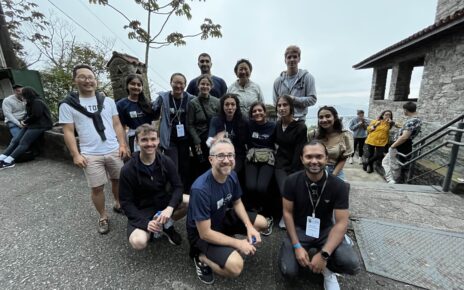Mateusz Soliński presented a poster titled: SPAR-Timbre: Unlocking Non-linear Dynamics in Music Audio with Symmetric Projection Attractor Reconstruction by Mateusz Soliński, Wentao Hao, Elaine Chew at the 17th International Symposium on Computer Music Multidisciplinary Research on the theme Sound, Music : Space, Place, hosted by University College London at UCL East on 3-7 November 2025.
Soliński, M, W Hao, E Chew (2025). SPAR-Timbre: Unlocking Non-linear Dynamics in Music Audio with Symmetric Projection Attractor Reconstruction. In Proceedings of the 17th International Symposium on Computer Music Multidisciplinary Research (CMMR), London, UK. [ paper | poster ]
Mateusz, supported by Wentao Hao and Ananth Venkatesh, showed the results of using the SPAR method for visualising and analysing the timbre of different orchestral instruments. We previously used the SPAR to analyse ECG signals of trio musicians to classify their dynamically changing roles in performance. Having obtained promising results, we were curious to see what the attractors created from the sound signals look like. The results proved to be so incredibly interesting that we decided to share them with a broader audience.
The conference was also an excellent opportunity to learn more about computer music research that could inspire our further analyses. It was also full of many interesting performances and demos.

SPAR-Timbre: Unlocking Non-linear Dynamics in Music Audio with Symmetric Projection Attractor Reconstruction Mateusz Soliński, Wentao Hao, Elaine Chew
Abstract : This study investigates the use of the Symmetric Projection Attractor Reconstruction (SPAR) method as a novel approach to visualising and analysing musical sounds and their dynamic changes. Rooted in the principles of deterministic chaos, the SPAR method reconstructs attractors in N-dimensional phase space to reveal unique geometrical patterns that distinguish different instruments, unveiling complex nonlinear structures. SPAR is relatively robust to noise as it constructs the underlying attractor structure. Using an unsupervised machine learning method (hierarchical clustering), we identify distinct attractor shapes for string and wind instruments. String instruments exhibit more symmetric attractors, whereas wind instruments show greater variability and asymmetry. The clustering accuracy for distinguishing between string and wind instruments was 93%, and 71% for differentiating between string, woodwind, and brass instruments, demonstrating the effectiveness of this method for automatic timbre classification. The study further highlights significant variability in attractor shapes in one-second-long windows of the sound of an instrument playing a given pitch. The observed rapid transitions between stable and chaotic states underscore the complexity and dynamic nature of sound signals. Additionally, a comparison of the attractors between sounds generated using the VST (Virtual Studio Technology) libraries (BBC Orchestra, Apple Studio Strings) and recorded samples for violin was performed to show differences associated with the sound source. This research demonstrates the potential of the SPAR method for sound analysis, providing valuable insights for music information retrieval and serving as an input option for machine learning models.



